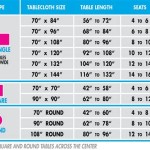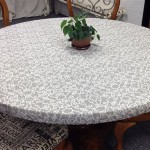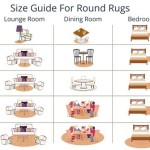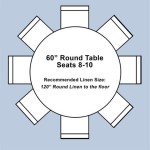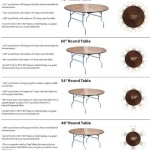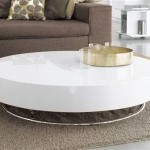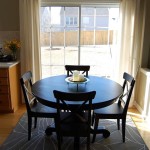Quilted Table Runner Patterns: A Comprehensive Guide
Quilted table runners are versatile and decorative pieces that can add a touch of warmth and personality to any dining table, coffee table, or sideboard. They offer an excellent opportunity for quilters of all skill levels to explore different techniques, color palettes, and fabric combinations. This article will delve into the various aspects of quilted table runner patterns, providing a comprehensive guide to understanding their design, construction, and application.
A well-chosen table runner can complement the existing decor of a room and create a focal point. They are also practical, protecting the surface of the furniture from scratches, spills, and heat. The relatively small size of table runner projects makes them ideal for using up scrap fabric, experimenting with new quilting methods, and creating seasonal decorations.
Understanding the Anatomy of a Quilted Table Runner
A typical quilted table runner consists of three primary layers: the top, the batting, and the backing. The top layer is the decorative element, usually composed of pieced fabric blocks, appliqued designs, or a whole cloth panel. The batting is the inner layer of padding that provides loft and insulation, giving the quilt its characteristic puffy texture. The backing is the bottom layer, typically made of a single piece of fabric, providing a smooth and durable finish.
The quilting stitches hold these three layers together. These stitches can be functional, providing structural integrity, and decorative, enhancing the overall design. Quilting patterns can range from simple straight lines to intricate free-motion designs, adding visual interest and texture to the finished table runner.
The binding is the final step in completing the table runner. It is a narrow strip of fabric that encases the raw edges of the quilt, providing a clean and professional finish. The binding also protects the edges of the quilt from wear and tear, extending its lifespan.
Exploring Different Table Runner Patterns
The variety of quilted table runner patterns is vast and diverse, catering to a wide range of tastes and skill levels. Patterns can be categorized based on their construction techniques, design motifs, and intended use. Some common types of table runner patterns include:
- Strip-pieced table runners: These runners are made by sewing together strips of fabric, creating a simple yet visually appealing design. Strip piecing is an excellent technique for beginners as it involves straight seams and minimal fabric manipulation.
- Block-based table runners: These runners are constructed from individual quilt blocks, such as squares, triangles, or hexagons. The blocks are sewn together to form the top layer of the table runner. Block-based patterns offer a wide range of design possibilities, as different blocks can be combined to create unique and complex arrangements.
- Appliqued table runners: These runners feature fabric shapes that are sewn onto a background fabric, creating a decorative design. Applique can be done by hand or machine and allows for intricate and detailed designs.
- Seasonal table runners: These runners are designed to celebrate specific holidays or seasons, such as Christmas, Thanksgiving, or spring. They often incorporate seasonal colors, motifs, and fabrics.
- Modern table runners: These runners feature contemporary designs, often incorporating geometric shapes, bold colors, and minimalist aesthetics. Modern quilting emphasizes negative space and simplicity, creating a clean and uncluttered look.
When choosing a table runner pattern, it is important to consider the overall style of the room and the intended use of the runner. For example, a rustic dining table might benefit from a table runner made with natural fabrics and earthy tones, while a modern coffee table might be better suited to a runner with bold geometric patterns.
Essential Considerations for Fabric Selection and Color Palette
The choice of fabric and color palette is crucial in creating a visually appealing and durable quilted table runner. Consider the following factors when selecting fabrics:
- Fiber content: Cotton is the most commonly used fiber for quilting, as it is easy to work with, durable, and readily available in a wide range of colors and patterns. Other suitable fibers include linen, rayon, and blends.
- Fabric weight: Medium-weight fabrics are generally preferred for quilting, as they are easy to sew and provide a good balance of drape and structure. Lightweight fabrics can be used for applique or accents, while heavier fabrics can be used for borders or backing.
- Fabric print and color: Consider the overall style of the room and the intended use of the table runner when selecting fabric prints and colors. Coordinate the fabrics with the existing decor or create a contrasting accent.
- Color palette: Choose a color palette that is harmonious and visually appealing. Consider using a color wheel to select complementary or analogous colors. Experiment with different color combinations to create a unique and personalized design.
It is also important to pre-wash fabrics before cutting and sewing to prevent shrinking or bleeding after the table runner is completed. Pre-washing removes any sizing or finishes from the fabric, ensuring that it will not distort or fade during laundering.
Mastering Quilting Techniques for Table Runners
Quilting is the process of stitching the three layers of the table runner together, creating a unified and durable piece. There are several different quilting techniques that can be used, each with its own unique aesthetic and level of difficulty.
- Straight-line quilting: This technique involves stitching parallel lines across the table runner, creating a simple and modern look. Straight-line quilting can be done by machine or by hand and is a good choice for beginners.
- Echo quilting: This technique involves stitching around a design element, such as a block or applique, creating a subtle and textured effect. Echo quilting can be done by machine or by hand and is a good way to highlight specific features of the table runner.
- Free-motion quilting: This technique involves moving the fabric freely under the needle, creating intricate and organic designs. Free-motion quilting requires practice and skill but allows for a high degree of creativity and personalization.
- Hand quilting: This traditional technique involves stitching the layers together by hand, creating a soft and textured look. Hand quilting is a time-consuming process but produces a unique and beautiful result.
When choosing a quilting technique, consider the overall style of the table runner and your skill level. Start with simple techniques and gradually progress to more complex ones as your skills improve. Practice quilting on scrap fabric before working on the actual table runner to ensure that you are comfortable with the technique.
Binding and Finishing Touches
The binding is the final step in completing the quilted table runner, providing a clean and professional finish. The binding is a narrow strip of fabric that encases the raw edges of the quilt, protecting them from wear and tear.
There are several different methods for attaching the binding, including:
- Machine binding: This method involves sewing the binding to the front of the quilt by machine, then folding it over to the back and securing it with hand stitches or machine stitches. Machine binding is a quick and efficient method that produces a durable and professional finish.
- Hand binding: This method involves sewing the binding to the front of the quilt by hand, then folding it over to the back and securing it with hand stitches. Hand binding is a more time-consuming process but produces a softer and more delicate finish.
After the binding is attached, trim any excess thread and press the edges of the table runner to flatten the seams and create a crisp, clean finish. Consider adding decorative embellishments, such as buttons, beads, or embroidery, to further personalize the table runner.
Finally, care for the finished table runner by laundering it according to the fabric manufacturer's instructions. Gentle washing and proper storage will help to extend the lifespan of the table runner and keep it looking its best.

Nordic Star Table Runner Free Pattern The Crafty Quilter

Quilt As You Go Table Runner Crafty Staci

Nordic Star Table Runner Free Pattern The Crafty Quilter

Easy Quilt Patterns Scrappy Table Runner Pattern For Charm Packs Fall Beginner Quilting

Detour Table Runner Quilt Pattern

Star Spectacular Table Runner Quilt Pattern Fort Worth Fabric Studio

Quilt Patterns Table Runner Pattern And Bonus Pillow Scrappy Quilting For Fat Quarters

Go Love Tracks Table Runner Pattern Accuquilt

Spring Table Runner Pattern Quilting Daily

Fall Charm Quilted Table Runner Joyous Home
Related Posts

